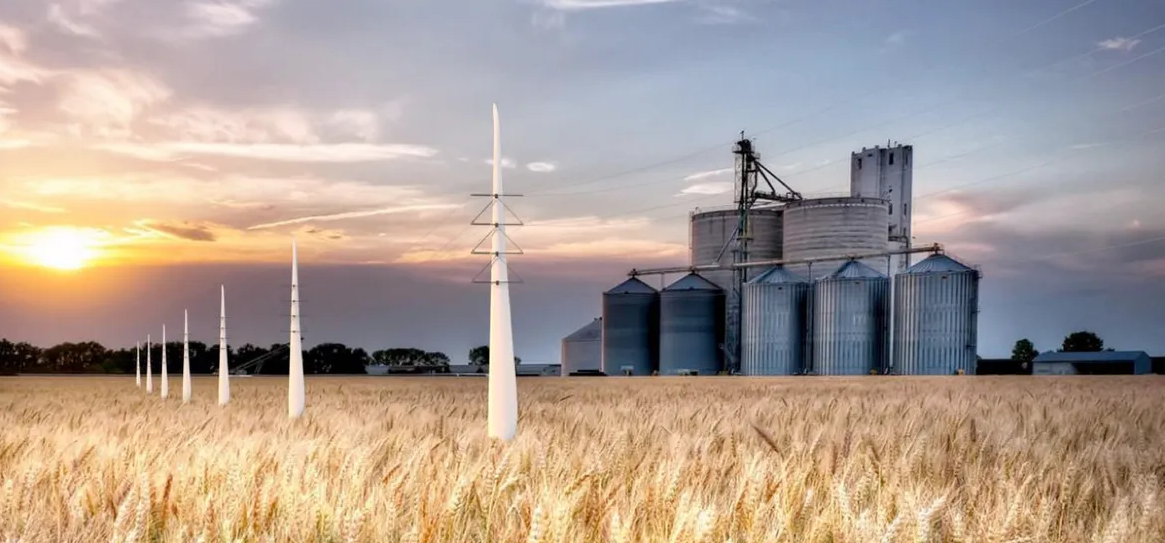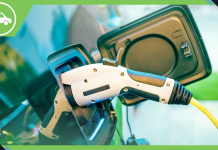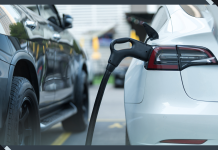Written by: Maria Gallucci
Wind energy projects are set to soar this century as countries shift away from fossil fuels, bringing tens of thousands of turbines to mountain ridges, fields and coastal waters around the world. These whirling devices are seen as key to curbing greenhouse gas emissions and producing the clean electricity that’s needed to power homes, factories and vehicles.
Yet the surge in wind-blown turbines is posing a new challenge, one the industry is just starting to grapple with: What to do with the towers and blades once they reach the end of their useful lives?
For most companies, the easiest and cheapest way to deal with spent turbine parts is to bury them in landfills. Wind industry experts say the current scale of turbine waste is minuscule, particularly when compared to the monsoon of household garbage and construction debris that countries generate every day. But that won’t always be the case. In the United States, ambitious projections for renewable energy development envision 3,000 gigawatts of cumulative wind power capacity in 2050 — more than 20 times the amount installed today.
Globally, the volume of wind turbine blades reaching end of life could hit 12 billion metric tons in 2050, according to researchers at the U.S. National Renewable Energy Laboratory. All those retired turbines will pose a problem for communities and the environment if they continue to wind up in the dump.
The pending pileup has a lot to do with how wind turbines are made. About 85 percent of turbine components — including steel towers and copper wiring — can be reused or recycled once the three-pronged machines cease twirling. But the blades themselves are built with materials designed to endure two to three decades of spinning around in high winds and enduring lighting strikes, bird collisions and other potential assaults from the surrounding environment. Lightweight glass or carbon fibers are embedded in plastic resins, forming sturdy shells that can stretch as long as the wings of jumbo passenger jets. This ultimately makes blades harder to break for other uses.
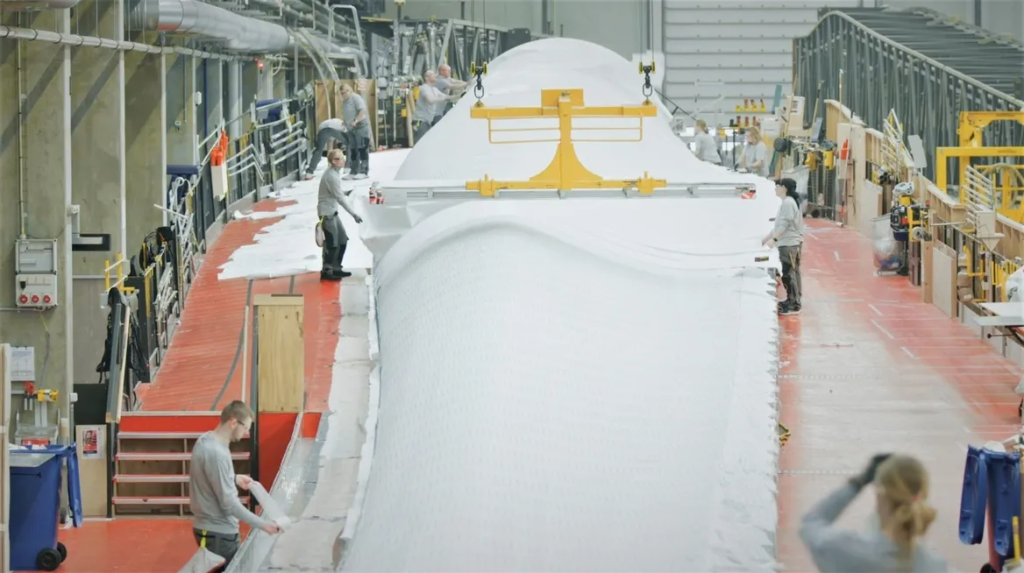
“The blades are designed in a way that, structurally, they can last for a long time. So what we want them to do in the main part of their life is what makes it challenging at the end of their life,” said Jonas Pagh Jensen, a Denmark-based sustainability specialist for Siemens Gamesa, one of the world’s largest wind turbine manufacturers.
Fortunately, many wind farm operators and turbine manufacturers are trying to get ahead of the issue before hundreds of gigawatts’ worth of wind turbines are brought offline in the next few decades. So far, their efforts are largely voluntary. In order to scale these solutions and keep turbine waste at bay, governments and companies will need to adopt ambitious standards, invest in necessary recycling infrastructure, develop new business models — and potentially make manufacturers liable for what ultimately happens to their blades, said Anne Velenturf, a senior research fellow at the University of Leeds in England.
According to Velenturf, the solutions can’t be limited just to recycling, since recycling methods themselves can be highly water- and energy-intensive. She’s a leading proponent of a circular-economy model for wind energy infrastructure, which involves making better use of every material and component throughout a turbine’s life cycle.
Such an approach is “crucial to putting recycling in the context of higher-value solutions such as repair, reuse, remanufacturing and repurposing,” Velenturf said.
Here are four standout ideas that companies and researchers are pilot-testing or already deploying in the real world as they search for solutions to the wind industry’s waste problem.
1. Turning turbine blades into utility poles
Repurposing wind turbines is the main mission of the Re-Wind Network, an international team of academic researchers. Earlier this year, the group installed a pedestrian bridge made from turbine blades in County Cork, Ireland, and it is now designing other types of bridges, plus boardwalks, noise barriers and bus stops.
Last year, the network’s members at the Georgia Institute of Technology in Atlanta built a 20-foot-tall prototype of a utility pole made from an old General Electric turbine blade. After determining that the blade piece can support the weight of transmission wires and equipment, the engineers have plans to build a new prototype using an entire 120-foot onshore blade.
“What we have found is that, logistically, the installation of these blades would be almost the same as any other transmission tower,” said Yulizza Henao-Barragan, a research assistant at Georgia Tech who is spearheading Re-Wind’s BladePole project.
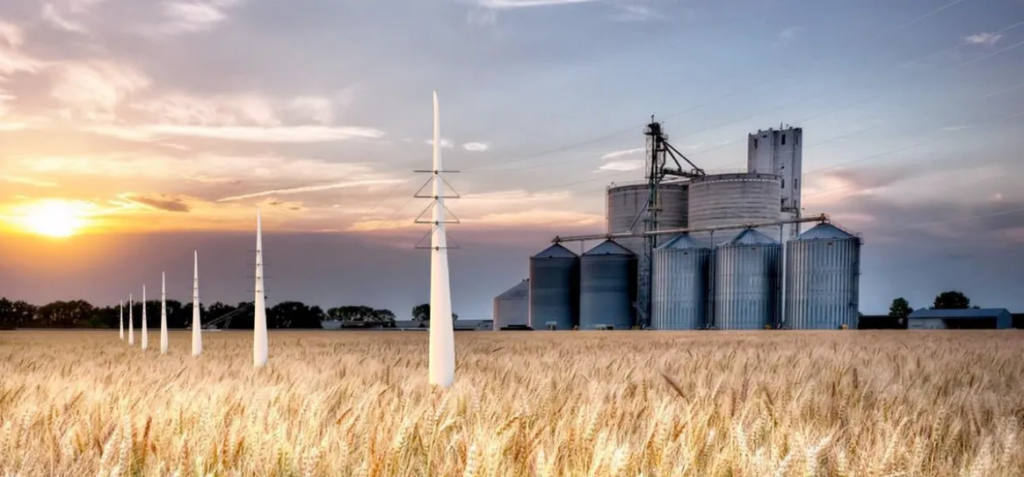
Henao-Barragan thinks that the windy plains of the U.S. Midwest could be ideal locations for BladePoles, given how costly and complicated it is to transport blades, which can be hundreds of feet long — and considering the massive need for long-distance transmission lines that connect rural wind farms to population centers. Turning blades into poles, bridges and other structures also puts existing composite materials to good use, decreasing demand for new building supplies.
“What we’re trying to show is that there’s a better solution to recycling,” Henao-Barragan said.
The Georgia Tech team plans to test the full-size prototype later this year at the Smoky Hills Wind Farm, a 250-megawatt project operated by Enel Green Power in Lincoln, Kansas. Researchers visited the wind farm last year to measure, slice open and digitally scan a decommissioned blade. Back at the lab in Atlanta, the team is using data about the blade’s geometry and physical properties to create computer models and assess how these giant wings might hold up as civil infrastructure.
Enel Green Power operates more than 6.6 gigawatts of wind power capacity across the United States, including the Smoky Hills project. “Our fleets are fairly new and young, so we’re trying to prepare for the future,” Maggie Teliska, an innovation analyst for Enel, said of the company’s participation in the Re-Wind Network.
2. Crushing blades to a pulp to make blocks and cement
Enel, whose North American headquarters is in Andover, Massachusetts, is also exploring how to use spent blades for another essential grid technology: long-duration energy storage. Teliska said the company is collaborating with energy storage startup Energy Vault to potentially grind up blades, remove the fibers and use those to fortify the large blocks Energy Vault plans to use for its proposed gravity-based system.
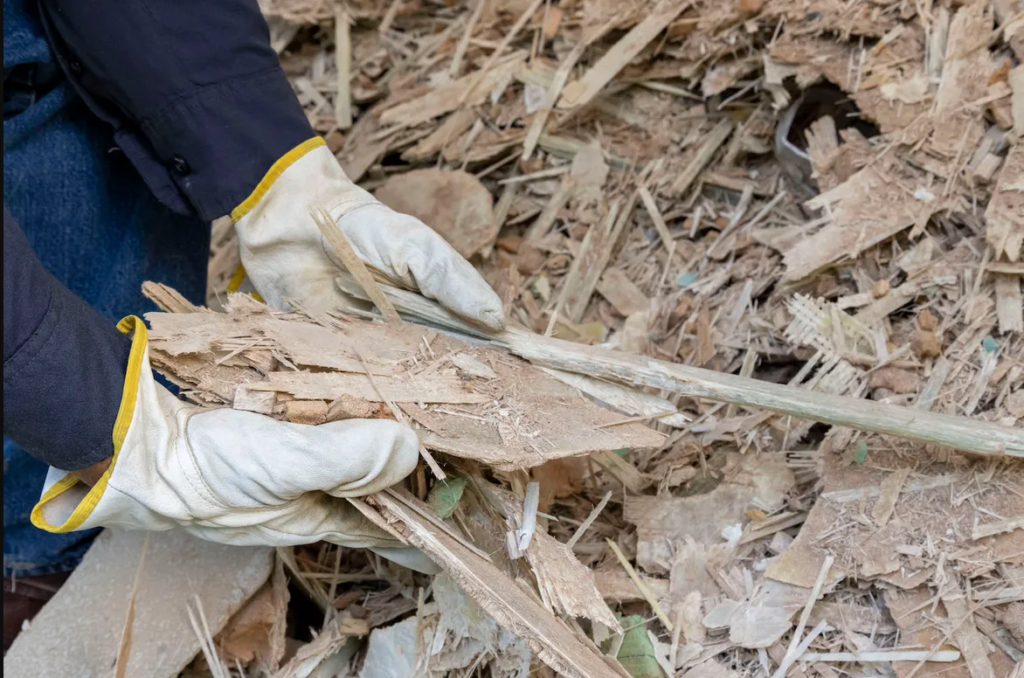
“Looking ahead 10, 20 years, I’m constantly trying to…make sure we know what’s out there, so we can use those technologies to create a new life cycle for our assets,” Teliska said.
In the meantime, ground-up blades are already being put to use to make cement.
At a squat industrial facility in Louisiana, Missouri, a series of shredders operated by Veolia North America (VNA) grind 20-foot sections of turbine blades into a pulp. A mechanical sorter separates metal and fiberglass from the blade’s softer interior materials of foam and balsa wood. VNA then remixes these materials depending on the particular requirements of cement factories. About two-thirds of the mixture is used to replace the sand and clay that goes into cement. The remaining volume is burned to heat the cement kilns, replacing coal.
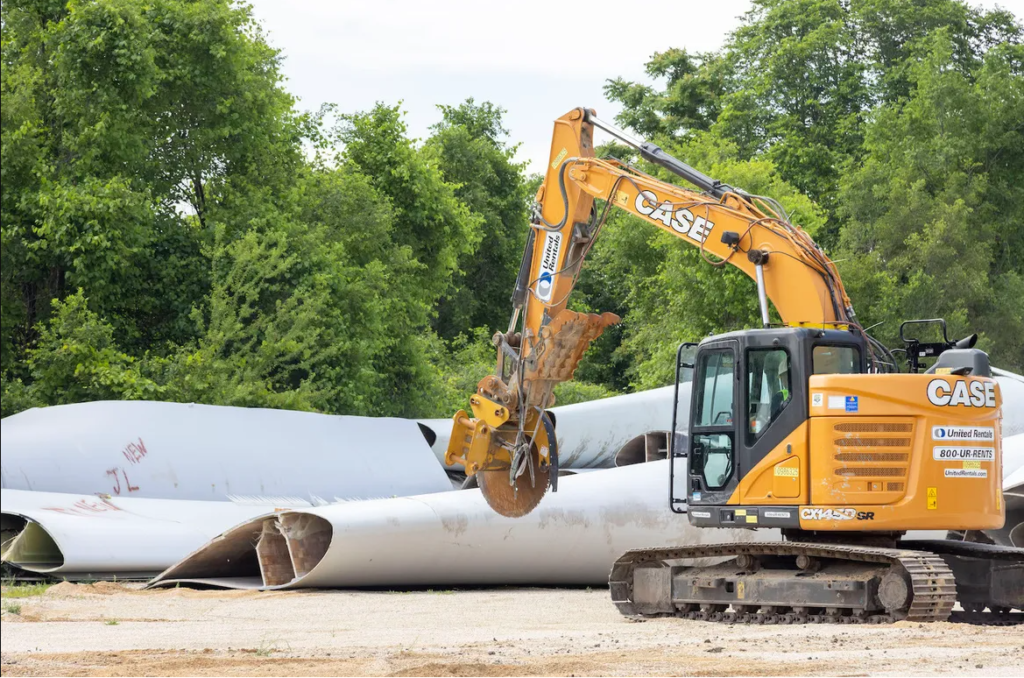
VNA began recycling turbines in 2019, after General Electric — the largest U.S. wind turbine manufacturer — reached out looking for a way to deal with its decommissioned blades. Manufacturers generally don’t disclose precise details about the materials used to make their wind energy equipment. So GE provided a five-gallon bucket of blade chunks, which VNA then used to identify chemical components and develop its recycling process.
“We’ve collected at this point close to 2,000 windmill blades and processed over 1,500 of them” for cement-making, said Bob Cappadona, president and CEO of VNA, which is based in Boston.
Cement manufacturing is notoriously dirty, producing about 8 percent of the world’s carbon dioxide emissions every year. By burning blade material instead of coal to make cement, producers could reduce their overall emissions by as much as 27 percent compared to the traditional process, GE has said, citing a 2020 analysis by sustainability consultancy Quantis.
3. Recovering materials by blasting blades with heat
While VNA’s process involves crushing up fiberglass to feed cement kilns, other recycling methods aim to retrieve the fiberglass and give it new life. One way to do this is through pyrolysis, a thermochemical process that’s still in the very early stages of being applied to decommissioned wind turbines.
Pyrolysis involves exposing materials to extreme heat — typically above 1,000 degrees Fahrenheit — in an oxygen-free environment in order to break down the plastic resins that bind the glass or carbon fibers. Plastic materials then emerge in the form of a liquid or gas, which can be used to make fuel or to heat buildings. The fibers remain solid and can be repurposed for building materials and auto parts or used to make new composites. Although giant oil companies have largely pushed pyrolysis as a way to handle plastic consumer waste, researchers across Europe have started pyrolyzing turbine blade materials in a handful of experiments and small-scale tests.
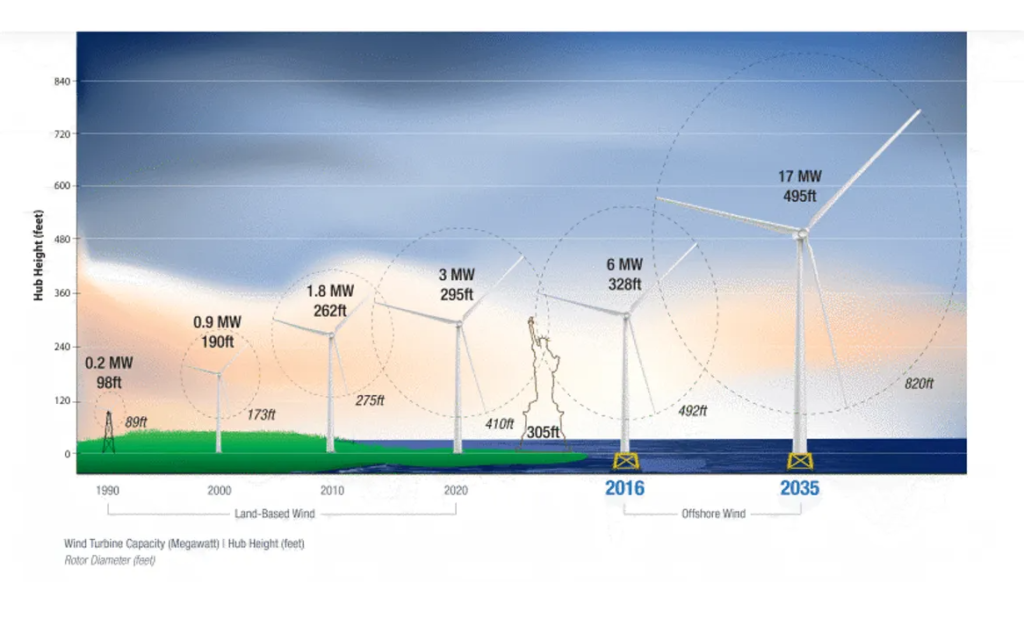
In Denmark, Makeen Power is designing and building a pilot pyrolysis plant for wind turbines. The company is a part of DecomBlades, a consortium of turbine makers and wind farm developers led by Danish energy giant Ørsted. Last year, the consortium received about $5.7 million from Innovation Fund Denmark for the three-year initiative, which involves both developing technologies and also finding the industries or companies that might want to use — and potentially pay more for — the recovered solid materials.
“Many of the [recycling] technologies exist, but they are not available at a full-scale or 100 percent cost-competitive with landfilling,” said Filip Engel, Ørsted’s vice president of sustainability and public affairs. “Part of the development that the industry has to go through is to scale and reduce the cost of those technologies, in order to be able to absorb the number of blades that will increasingly come out of the industry.”
Ørsted — which is also the biggest developer of America’s upcoming offshore wind fleet — estimates it will be decommissioning around 4.5 gigawatts’ worth of turbine blades after 2033, mainly in Europe. The company has committed to reusing, recycling or recovering all of the blades from its onshore and offshore wind farms, a move Engel said is meant to provide certainty and boost demand for recycling technologies.
4. Tweaking the chemistry to make blades that are easier to recycle
Although it has strong support from the wind industry, pyrolysis has its downsides as a recycling method. Producing extreme heat is an energy-intensive process and can risk degrading the recovered materials. So Siemens Gamesa has developed an alternative approach that involves changing how turbine blades are constructed to make it easier to retrieve and reuse fibers later on.
To start, the turbine maker reconfigured the chemical structure that binds the plastic resins to the glass or carbon fibers. The resin materials are virtually the same as those used in conventional turbine blades, except the new chemical structure has a “cleavage point.” This allows molecules to more easily break apart when dunked in a bath of acetic acid and heated to relatively mild temperatures of up to 200 degrees Fahrenheit, said Jonas Pagh Jensen of Siemens Gamesa. The process is more akin to brining pickles than blasting blades in super-hot ovens, he added.
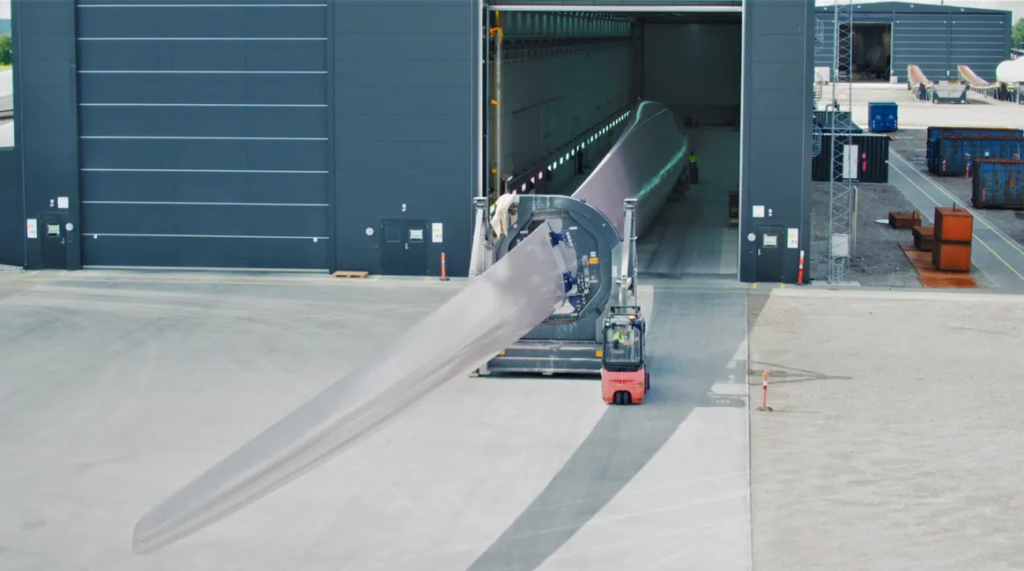
The company’s first RecyclableBlades are set to start spinning later this year. Germany’s RWE said it will install an unspecified number of the 265-foot-long blades at its Kaskasi offshore wind farm in the North Sea. The new blade chemistry has undergone a battery of tests to ensure the blades can last for decades at sea, even when regularly exposed to hot sun and acid rain.
RecyclableBlades will cost more to make and buy than conventional turbine blades. But as countries such as France, Germany and Belgium require, or are considering requiring, developers to include end-of-use plans in proposals for new wind projects, the specialty blades could have a competitive advantage, Pagh Jensen said.
For now, the manufacturer is focused on making and selling its novel blades as wind projects proliferate, and it’s less concerned with creating markets for materials that likely won’t be recovered for another three decades. Eventually, though, the fibers from today’s blades could be used to make anything from household appliances to high-strength storage tanks for hydrogen, he noted.
“Going forward, we’ll need exponential growth of renewables compared to what we have installed in the past,” Pagh Jensen added. “We still need to do something about all the blades that are already out there. But the biggest volumes will come after today.”

This story originally appeared in Canary Media and is part of Covering Climate Now, a global journalism collaboration strengthening coverage of the climate story.

